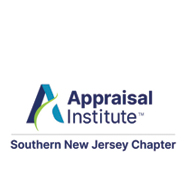NOTE: This is 1 of 4 courses being offered on June 10th & 11th.
- Click here to register for all 4 courses
- Download a printable PDF course description and registration form
Seminar Objectives
The program focuses on developing a sound market analysis that supports the highest and best use conclusion. It is accomplished by an inferred demand market study that is used when valuing commonly traded properties in a stable market where sales and rentals occur routinely. This program is relevant for both residential and general appraisers. All appraisers are expected to gather, research and analyze market information using peer tested and industry approved methods and techniques. An inferred market study is applicable for many types of residential and non-residential properties in various communities throughout New Jersey.
Market analysis precedes and supports the highest and best use conclusion(s) which extend into the three approaches to value and the reconciliation. This short program will help attendees prepare and communicate more effectively findings upon which analyses are based by understanding what areas should be researched, data to gather, and analysis to undertake regardless of the appraisal report’s communication format.
This program will offer techniques to rate and evaluate the property’s appeal in the market. The process is capsulize in a six step process. The concept of market analysis is required in all assignments and is a Scope of Work decisions. It supports the highest and best use which is overtly required by Standard Rule 1-3. The current edition of USPAP focused on the responsibility of an appraiser to analyze property productivity factors. Checking a box is no longer adequate.
This educational program will be a review for season practitioners and an introduction to appraisers how to use peer tested and industry accepted techniques and procedures. The goal is achieved using interactive discussions interspersed with examples to practice and better understand core concepts. An appraiser should strive to exceed minimum standards outlined in USPAP.
The program will challenge both new and seasoned practitioners. It will offer guidance in generating meaningful market analysis that support the highest and best use conclusion. The goal is to enhance the practitioner’s skill level to prepare well documented and supported appraisal services.
The audience is expected to consist of new and experienced field and review appraisers as well as users of appraisal services. Attendees are expected to be familiar with USPAP and general appraisal theory. This allows key topics to be explored in greater detail. The program is flexibly designed to enhance communication styles and generate meaningful discussion about key appraisal issues which should strengthen the industry and protects the general public.
Handout: Brief syllabus & student handout
Outline
10 minutes
- Introduction
- Overview of the program
20 minutes
Brief review of why market analysis is necessary and how it supports the highest and best use conclusion and its findings and conclusions are used in all three approaches to value and the reconciliation. Stress the requirements in the current edition of USPAP with a focus on Standard Rule 1-3(b) which requires the appraiser to analyze the relevant, legal, physical and economic factors as necessary to support the highest and best use conclusion.
10 minutes
Review the factors that create value and the components necessary for an actual market.
10 minutes
Discuss techniques used to measure demand and quantify supply. This program will focus on an inferred demand analysis.
10 minutes Break
20 minutes
Define what is meant by an inferred demand study and give a brief introduction into how its findings and conclusions are used in all three approaches to value and the reconciliation. This technique relies on projections based on the historical past and current market environment.
20 minutes
Review the six step process, a procedure that describes the Subject, evaluate its probable use and users, quantify supply and demand factors, evaluate their interaction, and conclude an opinion about subject capture. Discuss Step 1 in greater detail.
10 minutes
Introduce an example estimating utility. Physical characteristics and legal controls are addressed and a density template is provided to organize the analysis.
10 minutes Break
15 minutes
Concept of rating grids is introduced and an example is provided. This tool can be used to recognize accrued depreciation and super-adequacies, evaluate buyer/user preferences, and consider risk.
5 minutes
Step 2 discusses how a market area is determined.
20 minutes
- Step 3 addresses the issue of evaluating demand. Elements of demand are identified and should be addressed in the appraisal report.
- Step 4 seeks to identify and evaluate current supply. Areas that comprise supply are identified and could be alternatives to the Subject. Strengths and weaknesses for both the Subject and competitive properties should be addressed in the appraisal.
- Step 5 brings supply and demand factors together. It seeks to identify if an over supply or imbalance exists.
15 minutes
Step 6 brings the process together. It concludes how the Subject is perceived in its market and evaluates its potential for market capture. It will be emphasized that findings and conclusions developed in a sound market analysis are the underpinning of the highest and best use conclusion, used in all three approaches to value and the appraisal’s reconciliation.
5 minutes Question & answer period.
